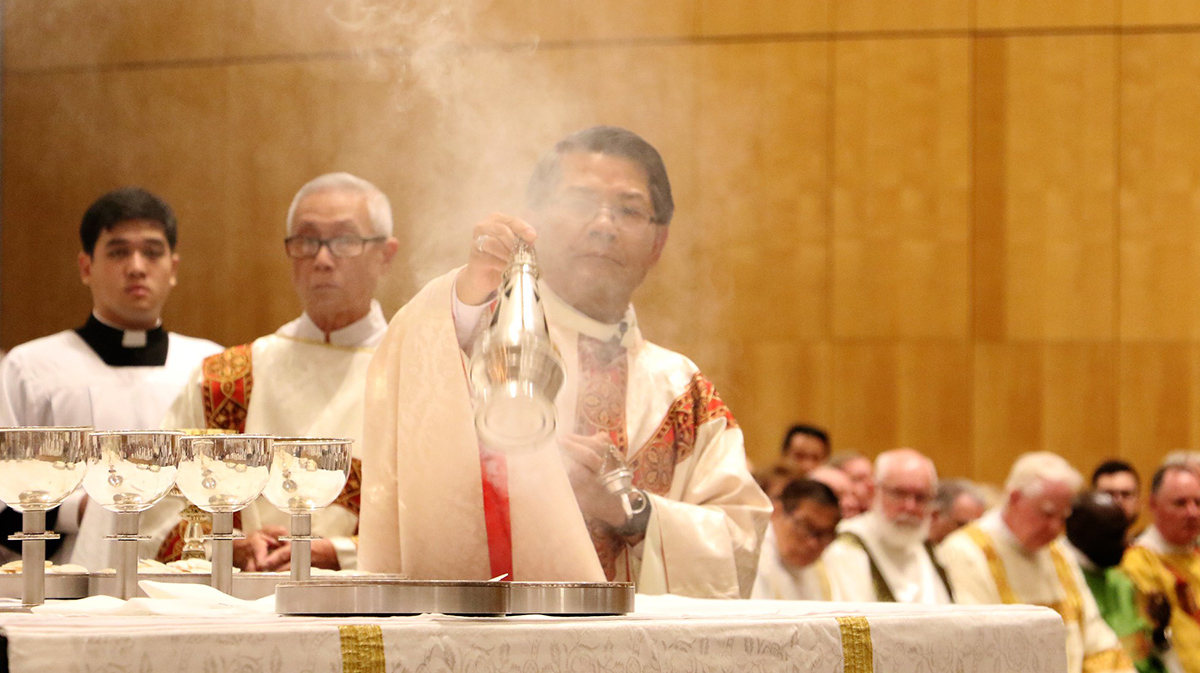The well-planned liturgy, brought to life through the prayerful ministry of gifted and experienced people, is a work of art. It flows, it has integrity, it is beautiful. At such a liturgy our attention is drawn to the Scriptures, the rituals, the music, the rich silence, the prayers of the assembly, the worship of God.
- T. Cotter Called to Preside
The word ‘liturgy’ comes from the Greek leitourgia meaning a public service or voluntary work of the people. People create liturgy, and good liturgy requires the bringing together of many talents and ministries. The music, art, furnishings and vestments need to be the best and most worthy we can bring before God. And to our proclamation of scripture, our processions, liturgical actions and prayers we must bring a most authentic spirit.
Liturgy is about more than words. Everything that is visible needs to communicate something of the mystery we are celebrating: the altar cloths, the Priest’s vestments, the flowers, the images and statues, the furnishings, the colours of the liturgical season … all of these help to create the atmosphere of prayer and silently convey an invitation to worship.
Those entrusted with creating the environment for liturgy have the task of providing the People of God with a beautiful and worthy place for worship. The key to the ideal liturgical environment is noble simplicity. Any form of clutter is to be avoided. Noble simplicity does not necessarily equate with expense. It equates with what is genuine, simple and beautiful.
Within the Mass, music serves a variety of needs. It gathers the voice of the assembly into one. It accompanies processions. It invites people to listen and to praise, but it never dominates. It expresses the mood of the liturgical season. Music has the power to enrich the liturgy and to bring depth to the prayer of the assembly. It involves people. Singing together expresses our unity in prayer and the Church’s unity as the Body of Christ. Liturgical musicians, whether instrumentalists or cantors, bring their faith and talents to serve the Church’s worship. In this way they invite the assembly to full, conscious and active participation in liturgy.
Noble simplicity is the key to good liturgy. Everything that is seen, heard, touched, and tasted in liturgy has to bear the weight of divine mystery and needs therefore to be beautiful in the true sense of beauty. The altar, vessels, books and furniture are to be worthy of what they represent: the altar must be the most beautiful table the community can provide because it represents Christ himself; the vessels (the chalice and paten) are to be worthy of holding the Body and Blood of Christ; the Book of Gospels that is held high needs to convey that here, in this book, are the sacred texts to be proclaimed as the living Word of God. Even the seating in the place of worship is important because the people are the Body of Christ gathered, in full view of one another, around the altar. The People of God are as holy as the Word of God and the Body and Blood of Christ because together they are, by their baptism, Christ’s Body.
Everything, therefore, needs to be taken into consideration. Nothing is too small. Even the way people are welcomed as they enter the place of worship is important. Everyone has a part to play because, together, we are the Body of Christ and each person is a significant part of it.
For Reflection and Discussion
1
List the ways you participate and contribute to making the liturgy ‘a work of art’.
2
Discuss the relationship between ars celebrandi, the art of proper celebration, and the call for the full, conscious and active participation of all the faithful.
3
Define your understanding of the term ‘art’.
4
The Priest and assembly are artists. What is this statement implying?
5
Can you think of other ways you can contribute to enhance the liturgy?
6
What are the different elements of liturgical prayer?

